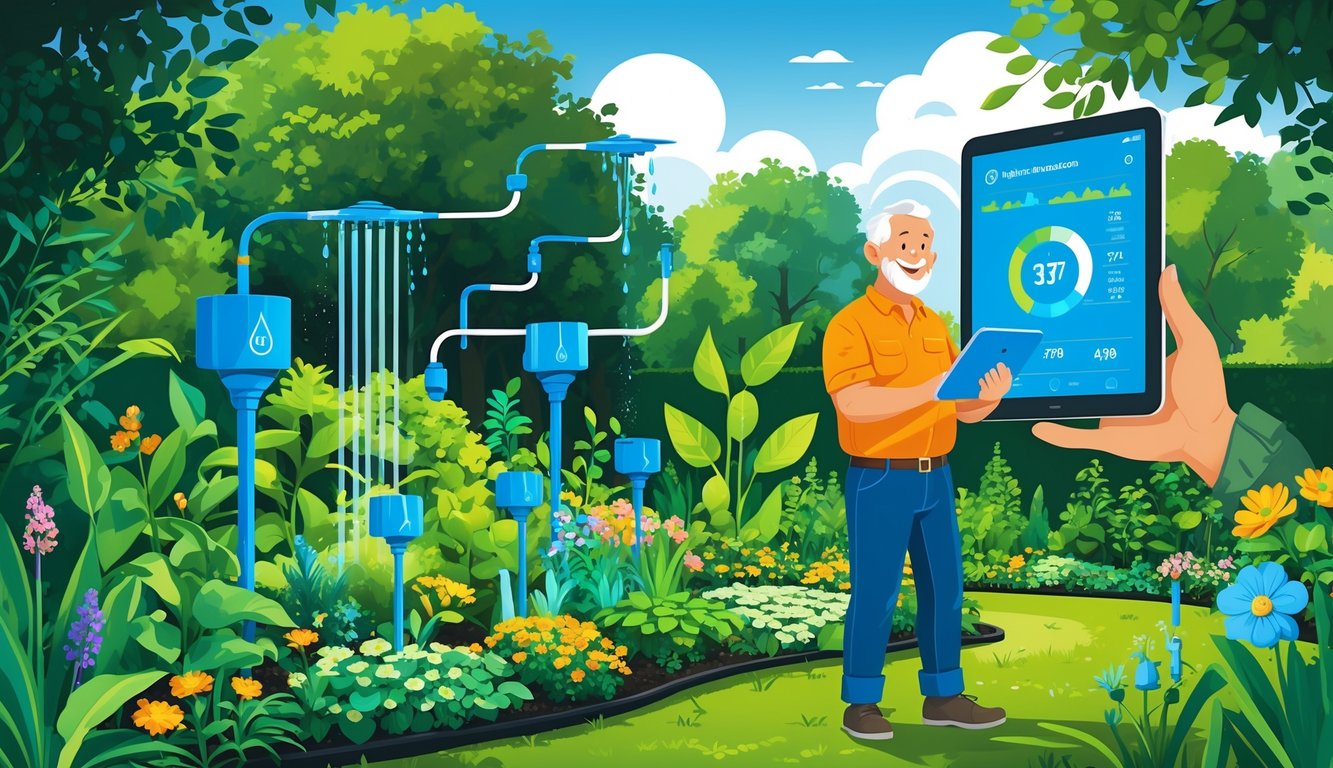
Future of Smart Irrigation for Garden Owners
Somewhere, a valve’s leaking and my neighbor’s lawn is still greener. Meanwhile, the folks who jumped on smart irrigation early are slicing water bills by 40% (WSJ, Feb 2025). It’s not just about the Wi-Fi gadgets; the tech is mutating so fast, I can’t keep up. Can anyone?
Emerging Trends in Irrigation Technology
My phone buzzes at 3 a.m. because a sensor thinks the soil’s “perfect.” Annoying. But also? I don’t miss wrestling with manual dials. Big brands are obsessed with climate-adaptive systems, and some of these apps look like airplane cockpits. Seriously, who are they for—gardeners or retired pilots? (See: Smart Irrigation Systems: The Future of Efficient Garden Watering, 2025.)
Now, everything’s about hyper-local weather. Satellite data, microclimate models, “seasonal adjustment” vs. “learning algorithm”—it’s all just blurring together. California garden groups keep posting compatibility lists (Home Irrigation Tech Standards Board, Jan. 2025), but will that help my tomatoes? Or just make the water company look good? I’m skeptical.
The Expanding Role of AI and Machine Learning
Firmware for hoses. That’s where we’re at. Machine learning is everywhere—auto-adjusting schedules because my lavender “needs” 9% less water this week. Who decided that, some bot? Algorithms now mix plant databases, local rules, and live water stats. Someone told me their city gave them a rebate for running an AI system. I half-expected a trophy.
According to Smart Irrigation: The Future of Watering Your Garden (Water Champions, April 2025), these platforms chew through forecasts, plant types, your backyard’s weird slopes—just to save a few bucks. My app once “anticipated” rain based on a model from 80 miles away. Hilarious. Still, I can’t argue with 25% less runoff. These tweaks add up. If you’re trying this, check if your old valves even work with the new software, unless you love burning Saturdays on hold.
Frequently Asked Questions
Nobody warned me that swapping sprinklers for “smart” ones would spark so many random questions—budget freakouts, confusing menus, rebates that might as well be urban legends. Even the Texas Cooperative Extension and EPA’s WaterSense guides don’t say what to do when your app glitches and it’s actually raining outside.
How can smart irrigation systems reduce my garden’s water consumption?
First time I used my controller, it skipped three cycles because rain was “likely.” Sure. Meanwhile, my neighbor’s bed still watered in the downpour. Turns out, WeatherSense checks live weather and soil moisture, and my bill dropped 35%.
I’ve watched a drip line quietly feed 1–4 gallons per hour right at the roots, even during that Texas drought. My old sprinkler just watered the sidewalk. Not really the sidewalk’s fault, but still.
What are the initial costs for installing smart irrigation technology?
My cousin spent $250 on a Rain Bird controller, then almost that much again on Wi-Fi valves. Labor? Not included. Burrtec Irrigation quoted $500 for a basic lawn, but that’s if you don’t swap every head. Some places charge “fees” that don’t even cover app setup.
Don’t forget the tiny stuff—adapters, harnesses, soil sensors. It all adds up. Always get an itemized quote, down to the last weird fitting.
Can I integrate smart irrigation with my existing garden setup?
Supposedly, 80% of commercial valves click right into Orbit B-hyve or Hunter Hydrawise. Except when they don’t. Ask me about the three hours I spent hunting a 9-volt relay in 100°F heat. Some new heads retrofit easily, but try using old hoses or rotary heads and suddenly you’re watching YouTube videos from 1996.
No magic fix except patience, electrical tape, and a sense of humor.
What kind of maintenance do smart irrigation systems require?
“Maintenance-free,” they said. Sure. Two months in, my rain sensor glitched every time a grackle landed on it. Most installers will admit you’ll need to check valves yearly and update Wi-Fi modules every few months.
If you like crawling through mulch to clear emitters or chatting with supply reps (guilty), you’ll be fine. Battery swaps, sensitivity dials—all take time if you’re not watching.
Are there any incentives or rebates for upgrading to smart irrigation?
I keep seeing WaterSense rebates on my city’s site, but getting the paperwork through? Torture. Travis County gave me $150 for Wi-Fi upgrades after I sent receipts and three months of lower bills. Nobody mentions the three weeks of follow-up emails.
Some garden stores offer instant rebates if you buy their favorite brand—a friend got half off some heads—but brace yourself for a flood of marketing emails.
How user-friendly are smart irrigation interfaces for non-tech-savvy gardeners?
So, my dad’s still out here jabbing at the old dial like it’s 1998, even though I literally installed a Rachio touchscreen for him last spring. He won’t touch the app. He called me (twice, mind you) because somehow the sprinklers started blasting the front yard at midnight—don’t even ask how, he’s not sure either. Are these things supposed to be intuitive? Because, honestly, half the time I wonder if I’m the one missing something. EPIC’s 2024 survey says half of the new folks wasted at least two hours poking around menus, apps, and whatever firmware update they forgot to install. Two hours! For a sprinkler!
Honestly, if you’ve only got a couple of beds by the porch, why would you need one of those overkill controllers with, like, twelve zones and a million settings? It’s just asking for trouble. And why is it so hard to just turn the thing off? I mean, a big red “Off” button would save my sanity—and maybe stop the raccoons from chewing on the rain sensor again.